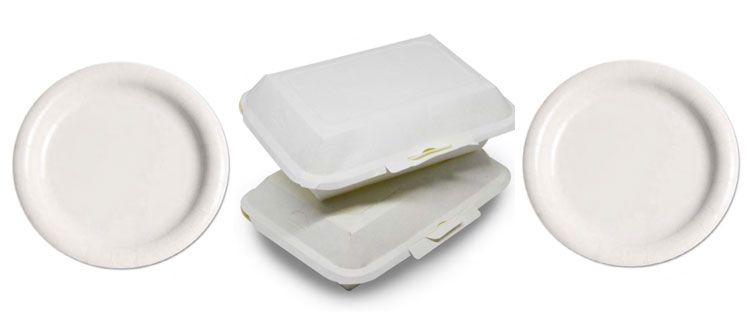Ten Reasons to Wash More Dishes
Over the past two decades, the class of chemical compounds known as perfluoroalkyl and polyfluoroalkyl substances (PFAS) has come under increasing scrutiny from toxicologists, ecologists, and regulators given their persistence and connection to serious potential health effects, including kidney and testicular cancer, thyroid disruption, attention-de cit hyperactivity disorder (ADHD), delayed puberty and obesity.[1] And unfortunately — as a new report released by our friends at Center for Environmental Health (CEH) clearly shows — these chemicals are ending up in disposable dishes.
If that’s not reason enough to avoid disposable dishes, CEH has put together the following list to convince us all to wash more dishes!
For more information, please check out CEH’s report Avoiding Hidden Hazards: A Purchaser’s Guide to Safer Foodware, or download and print a copy of this consumer tips guide, here.
Almost no one likes washing dishes, but if you think carefully about throwaway dishes they are not good for us or the planet. Using a product once and then throwing it away makes no sense. Here’s why.
1. CEH tested 36 disposable dishes for fluorinated chemicals, including most of the popular brands. You may have heard about this family of chemicals – they are used to make disposable dishes water and grease proof, but they hang around in the environment for a long time. Even though most of them haven’t been well studied, it looks likely that they mess with our hormones. You can see the whole list of the products CEH tested here.
2. 12 of the items we tested contained these fluorinated chemicals. The products are typically made from waste or recycled fibers, but we don’t recommend them because of the harmful chemicals.
3. The other throwaway dishes we tested also concerned us. Some of them did not contain the nasty chemicals we were testing for, but had other unknown coatings which the companies that make the dishes won’t identify.
4. Other are made just from paper, but not recycled paper. That means forests are being cut down to make those plates.
5. Some are made from a plastic called PLA. It’s “greener” than most plastics because it’s made from corn, not petroleum, but that corn is typically grown using pesticides and GMO seeds.
6. Some of the products are called compostable, but that only is possible if commercial composting is available.
7. Almost none of the products are recyclable, especially if they have food on them, but again this depends on the what recycling is available in your town or county.
8. Using “greener” detergents (look for the Safer Choice logo or other green certifications) and running your dishwasher full makes washing dishes more environmentally friendly.
9. Don’t most of us prefer eating from regular dishes anyway?
10. Planning a party? Thrift stores often have great collections of dishes and flatware for reasonable prices. If you’re having a big party, renting dishes can be a great way to go.
————
About CEH:
The Center for Environmental Health (CEH) is a nonprofit organization committed to protecting people from toxic chemicals by working with communities, consumers, workers, government, and the private sector to demand and support business practices that are safe for public health and the environment. CEH assists large purchasers from government, education, healthcare, and private businesses to prefer healthier products and leverages their buying power to move the market towards safer products.
[1] https://www.ceh.org/wp-content/uploads/CEH-Disposable-Foodware-Report-final-1.31.pdf






